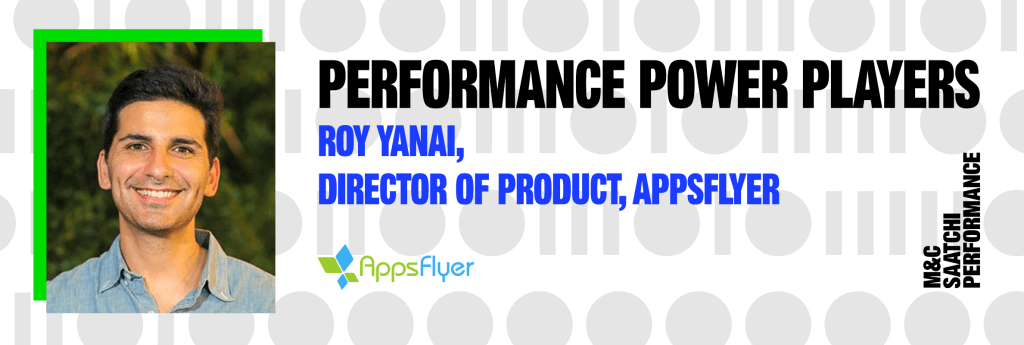
Roy Yanai Details What’s New in SKAN 4.0
Roy Yanai is the Director of Product at AppsFlyer, a leading marketing measurement, and analytics platform. Between founding the first national college hackathon in Israel and his extensive software development & product management background, Roy has positioned himself as an authority on Apple’s industry-wide privacy changes. We spoke with Roy to discover the latest changes that are being introduced to SKAdNetwork 4.0, understand where it improved and where it’s still lacking, and gauge how marketers and modeling methods will need to adapt to the new iOS privacy landscape.
Key takeaways:
- SKAdNetwork 4.0 enables new postbacks, four-digit source IDs, and web-to-app attribution.
- Modeling will need to adapt so that marketers can make the most of the advantages brought about by SKAdNetwork 4.0’s new data.
- Apple is still cracking down on fingerprinting, but details remain vague.
What are the main changes to SKAdNetwork (SKAN) 4.0?
There are three main changes to consider. One is lifetime value (LTV) capabilities — the measurement of post-install user activity.
The second is the source ID. Previously, this was known as the campaign ID, which ad networks used to signal whether the ID is a campaign or ad. Apple now refers to this as source ID and has extended its capabilities.
And last but not least is web-to-app attribution. The impact SKAN 4.0 has on these capabilities may not be immediately obvious without context, so we developed an interactive tool called Skanventure to help provide an interactive aid for marketers. It uses simulated data to compare SKAN 4.0’s updates on LTV measurement, campaign breakdown, and web-to-app attribution across multiple industries.
What are the benefits of the two additional postbacks sent in SKAN 4.0, and what can marketers do with this information?
Before SKAN 4.0, Apple’s post-install measurement time lasted around 24 hours. If SKAN didn’t see any reported user activity after 24 hours, the timer stopped, and no more user activity was recorded.
Going forward, SKAN will provide three postbacks within fixed times. The first postback is locked after 48 hours, which means you can measure 48 hours of user activity, and then any additional measured events will be sent with a delay of between zero and 24 hours.
After 48 hours, the second postback begins. Now you can measure users’ behavior and activities between day two and day seven with the same mechanism. Then, the third postback begins, allowing you to measure between seven and 35 days post-install.
There’s a nice balance here between the ability to optimize — that is, getting the data as fresh as possible — and being able to measure for as long as you want. No one wants Apple to send one postback after 35 days, so this allows advertisers and ad networks to optimize the data they’re getting from the user.
Recently, Apple also introduced a new type of measurement called coarse conversion values, which encodes the user data marketers have access to. Before SKAN 4.0, this was a number between zero and 63. That’s what Apple calls “fine grain,” and until now, that’s what advertisers had access to.
Now, Apple has introduced a concept called “coarse grain,” which is a conversion value that uses the labels “low,” “medium,” and “high” instead of a number.
On the first postback, Apple says that if the privacy threshold — that is, crowd anonymity — is high, you’ll get a fine-grain value. At a medium level, you’ll get a coarse grain value, and if it’s low, you’ll get a null value.
Bear in mind that on the second and third postback, Apple will only provide coarse grain values — so you’re only going to see low, medium, or high values.
How can Mobile Measurement Partners (MMPs) assist in mastering conversion values within the SKAN 4.0 framework?
In the end, the SKAdNetwork hierarchy is quite complex. It requires a configuration of the user activity you want to encode, and you would want to encode that into the proper conversion values.
Only now, instead of one schema, you have four different schemas to navigate — the fine grain result and the coarse grain for each postback.
The AppsFlyer ecosystem came together around the idea of enabling advertisers to measure their marketing efforts holistically and view real-time actionable data in one dashboard.
Everything is configurable by the marketer. They have a user-friendly dashboard where they can play around and tell us what events they want to measure and do so with maximum flexibility. Measurement is then communicated to every ad network our customers work with, while also collecting SKAN data from different ad networks and showcasing that information in a single dashboard that serves as their source of truth.
Source IDs (formerly Campaign IDs) now support four digits instead of two, allowing up to 10,000 values. What changes (if any) need to be made to attribution models to capture and organize these additional data points?
Previously, it wasn’t possible to have country-level reporting on campaigns. Now, some marketers will tell you that this is the bare minimum of what they need to understand their reporting. Until SKAN 4.0, that wasn’t available. What source ID does is enable that reporting.
We’re talking with advertisers and ad networks across the industry; some advertisers only run campaigns in the US, so the country breakdown isn’t important to them. Our thinking as stakeholders within this ecosystem is how we can help advertisers and ad networks collaborate and understand what would be valuable.
Maybe for some advertisers, ad networks would provide country-level reporting. For others, maybe they’ll provide support for creative ID or other values that previously weren’t being reported.
I have a disclaimer here — crowd anonymity also limits the source ID. At most, we’ll get four digits out of the source ID. But assuming the highest crowd anonymity doesn’t pass, it will go down to three digits.
Then assuming it doesn’t pass the medium value, the source ID will go down to two digits, the lowest number Apple provides. It’s not like the ad networks can play around with all 10,000 values — they need to look at them as if they are individual digits.
And, ad networks need to consider that if the crowd anonymity drops, they might not get this information back from Apple.
Does SKAN 4.0 address the core issues advertisers have faced since Apple’s initial privacy rollout?
SKAN 4.0 is a great new addition, but it’s not a game-changer as I see it.
One of the most important things we all want is for the ad networks to be able to optimize. So yes, now ad networks will know that a certain campaign drove X purchases on an aggregate level, but the main capabilities that ad networks had before the privacy changes are still nowhere to be seen.
Regarding the ability to break down campaigns, you need more granularity and measurement of what the user does. So in that sense, yes, SKAN 4.0 is a great advancement. At the same time, it’s also still entirely lacking.
How does SKAN 4.0 affect web-to-app attribution, and what does this mean for advertisers?
Web-to-app attribution is big for two reasons. One, this is the main source for a lot of channels. Imagine that using Google Search to download an app within Safari wasn’t part of SKAN. This addition will be a major improvement, not just for those channels but for the whole industry.
The second is owned media. Many advertisers, specifically mobile-first advertisers, have a landing page on their website whose sole purpose is to get you to download their app.
For example, many campaigns start the funnel with an ad on Facebook that drives users to a website where the marketer can provide more information.
From there, they’ll try to convert you to download the app. This approach gives advertisers better install rates for some apps, like productivity or finance apps. Apple’s ATT framework broke this flow, and marketers couldn’t measure those conversions. Now with SKAN 4.0, they can.
What changes do advertisers need to make to their marketing strategies to adopt these changes to SKAN 4.0?
Previously we, along with advertisers and ad networks, turned to modeling solutions due to the lack of data Apple supplied.
Instead of reporting null values, we have solutions that can model conversion values and provide them to the advertiser. In that sense, many things that we in the industry had to model or evaluate are becoming deterministic, such as breakdown by country.
Instead of modeling which installs are driven from which country, we now no longer need to guess. And a lot of these attribution strategies are going to change.
I don’t think modeling will disappear, but it must adapt. For example, we’re very close to getting day seven model data through SKAN. With SKAN 4.0, Apple will provide the second postback, but it’s only course grain values. In other words, it can only measure a few events.
Models aren’t going to disappear; they’re going to adapt and improve, thanks to the input from SKAN 4.0.
As an MMP, what changes to SKAN 4.0 are you and your team at AppsFlyer happy about? What would you like to see in the future?
I think we’ve touched on many things I’d like to see in the future — more granularity, more user data, etc.
As for what SKAN 4.0 actually brings to the table, it’s an excellent incremental change. I’ve previously spoken with app owners, and their frustration with SKAN was immense. Everything stopped. If there’s something I’m hopeful about, it’s that this will improve things a bit.
I’m also excited about what AppsFlyer and the greater industry can build within SKAN 4.0. I think the industry is maturing and adapting to these changes well. I don’t think things will go back to how they were before, and already see we’re making
Thanks for chatting with us, Roy!
(As of the date of this publication, the exact rollout timing of SKAN 4.0 is still to be announced by Apple. We will update this article with more concrete details as they come.)
About Roy Yanai
Roy shares a passion for discovering solutions to complex problems, beginning with the founding of HackIDC, Israel’s first national college hackathon, and eventually co-founding Mego, an eCommerce cross-shipping tracking platform. Now, Roy works at AppsFlyer, where he leads initiatives for helping marketers understand the incremental lift on their campaigns and how to navigate Apple’s privacy changes. As Director of Product, Roy oversees AppsFlyer’s entire iOS product solutions.
Interested in becoming a Performance Power Player, contact us if you would like to be considered as a contributor to our blog. For more about our mobile marketing services click here.


